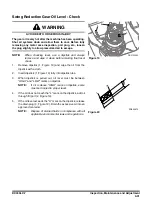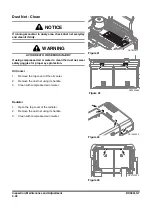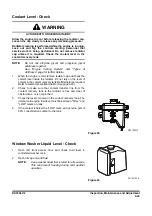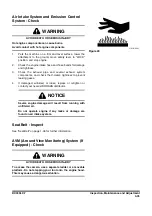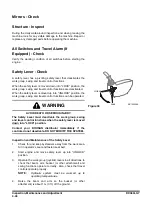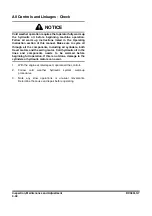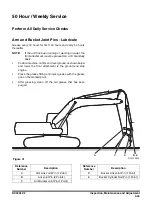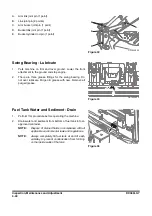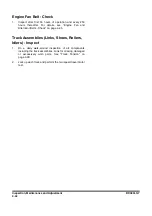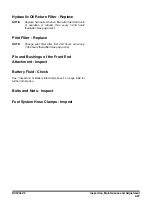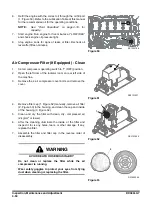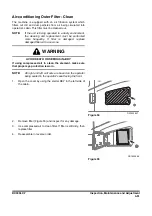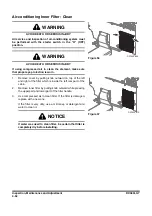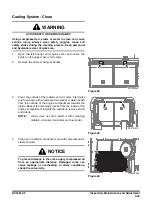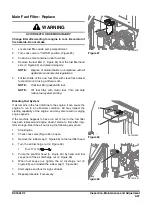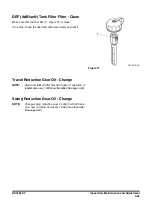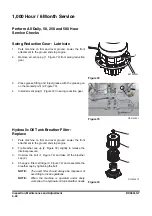
Inspection, Maintenance and Adjustment
4-45
DX380LC-7
Engine Fan and Alternator Belts - Check
1.
Replace badly worn, greasy, or severely cracked belts
immediately. These conditions prevent proper belt function.
Visually inspect the belt. Check the belt for intersecting
cracks. Transverse (across the belt width) cracks are
acceptable. Longitudinal (direction of belt length) cracks that
intersect with transverse cracks are not acceptable. Replace
the belt if it is frayed or has pieces of material missing.
2.
Before installing new belts, make sure all pulley grooves
are clean and not worn. Replace pulley, if damaged, or if
the grooves are worn.
3.
All pulley support bearings, shafts, and brackets must be in
working order.
4.
When replacing belts and pulleys, pulley alignment must
be checked with belts tensioned and brackets securely
clamped. A misalignment that can be visually detected and
will reduce belt performance.
5.
Do not force the belts into the pulley grooves by prying with
a screwdriver or pry bar. This will damage the belt side
cords which will cause the belts to turn and result in severe
belt damage or breakage during operation.
OK
OK
HAAA40
3
0
Figure 42
WARNING
AVOID DEATH OR SERIOUS INJURY
Keep clear of engine fan and fan drive belts when the engine
is running. Contact with rotating belt can cause injury.
WARNING
AVOID DEATH OR SERIOUS INJURY
When checking, adjusting, or replacing drive belts,
precautions must be taken to prevent accidental cranking
of the engine. Be sure the starter switch is in the "OFF"
position and the controls are tagged.

